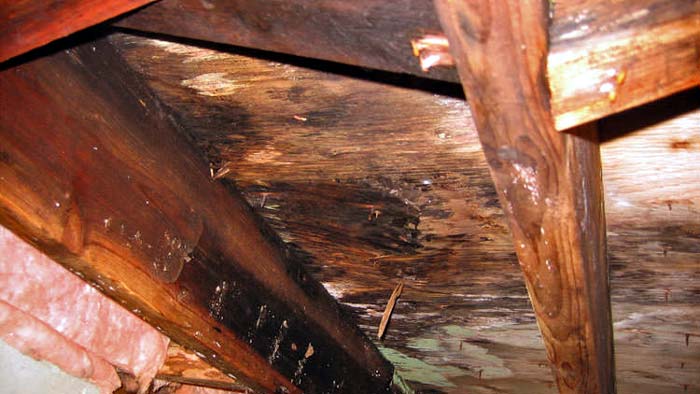Owing to its rapid growth and a love for dark, damp places, mold can be a very sneaky substance. Its devious growth is further fueled by the fact that most people treat it with an “out-of-sight-out-of- mind” attitude. It’s easy to be oblivious to the dangers of mold. Mold is a type of fungus that can grow on almost everything but most often affects porous materials such as drywall. It spreads through the entire house by producing spores that become airborne and settle on other surfaces.

While this may not appear like a grave issue, mold growth in a home poses serious health risks and a potential threat to the structural integrity of the property. Homeowners should, therefore, take proactive measures in suppressing and preventing its growth. The following information elaborates on the dangers of mold and how to deal with it.
Effects of Mold on Human Health
Mold produces spores and chemicals that cause a number of health issues. Some common symptoms of mold exposure include respiratory problems, coughing, sneezing, sinus infection, wheezing, and skin rash. While these symptoms are mostly mild, they can develop into more severe complications especially when left unattended. Some of the health-related dangers of mold growth in a house include the following.
1. Allergic Reactions
An allergy is an overreaction of the immune system towards a trigger (allergen). Some types of mold don’t cause allergies but inhaling or coming into contact with them excessively can still have effects. The most common types of mold that causes allergic reactions are the following:
- Cladosporium
- Penicillium
- Rhizopus
- Helminthosporium
- Aspergillus
- Fusarium
- Mucor
- Epicoccum
- Aureobasidium
Symptoms of exposure to such fungi include dermatitis, runny nose, sneezing, eye irritation, and skin rashes.
2. Asthma Attacks
Mold can trigger asthmatic attacks when its pores are inhaled into the lungs. This often occurs in people who are allergic to mold or those who are inherently asthmatic. Prolonged exposure can cause a severe condition known as allergic bronchopulmonary aspergillosis. This ailment can lead to difficulty in breathing, wheezing, coughing, fever, and chronic lung damage. The condition is especially severe among people who have been previously diagnosed with cystic fibrosis or asthma.
3. Respiratory Complications
When household mold is inhaled, it sometimes irritates the delicate lining of the air passages known as bronchi and bronchioles (air passageways inside the lungs). In some more serious cases, inhaling mold can cause inflammation in the bronchioles, which makes it difficult to draw in the air. This ultimately causes wheezing and difficulty in breathing.
When bronchi become infected it can lead to asthma attacks or bronchitis. When the microscopic particles of mold are not expelled through coughing, this can even lead to pneumonia. Some common symptoms of pneumonia include coughing, fever, shortness of breath, and chest pain when breathing.
Dangers of Mold for your House
Apart from the above health-related issues, mold can also adversely affect the structural integrity of a house. This is typically called dry rot. Dry rot mostly affects wood, but it can also be found in other construction materials like plaster and bricks. If you’re thinking about selling your home you do not want to make one of the biggest home-selling mistakes by not addressing the mold problem.
In houses whose frames are comprised of wood, dry rot can cause significant damage to the extent of compromising the structural integrity of the building. Mold growth can also cause damage to porous materials such as clothes, furniture, drywall, and insulation material. This type of mold usually results from floods, leaky water pipes, or underground leakage. In some cases, they may also be caused by excessive humidity in such places as basements and bathrooms.
How to Mitigate Household Mold
Mold can be detected through smell or sight. It often manifests as a black, gray, pink, green, or white substance. It can also produce an unpleasant, musty odor. If you suspect mold may be present in your home, you can now perform a toxic mold test using the same method as professionals, to determine whether it is or is not.
To remove small patches of mold, a homeowner can use chlorine bleach to scrub it off. You may also opt to remove and dispose of the affected materials like upholstery, carpets, or clothing.
To prevent and suppress the growth of mildew, homeowners should use a dehumidifier to get rid of excess moisture, especially in kitchens, bathrooms, and basements. Running the vent fan in a bathroom during and 10 minutes after showering is also an important practice to reduce the dangers of mold.
Dehumidifiers operate by drawing in saturated air, absorbing the moisture, and subsequently releasing it back into the environment. These appliances work diligently until the desired level of humidity has been achieved.
If a large amount of mold is found, you need to bring in professionals. The homeowner should contact a mold remediation company. If you’ve experienced a severe leak or flood, finding mold is even more likely.
Mold growth can be a significant concern for a homeowner. It doesn’t merely discolor household items but has the potential to damage your home’s structure. It adversely affects the health of the residents by causing respiratory problems, asthma attacks, and allergic reactions. Mold growth can, however, be mitigated by getting rid of the excessive moisture, which is best achieved through the use of a dehumidifier.



